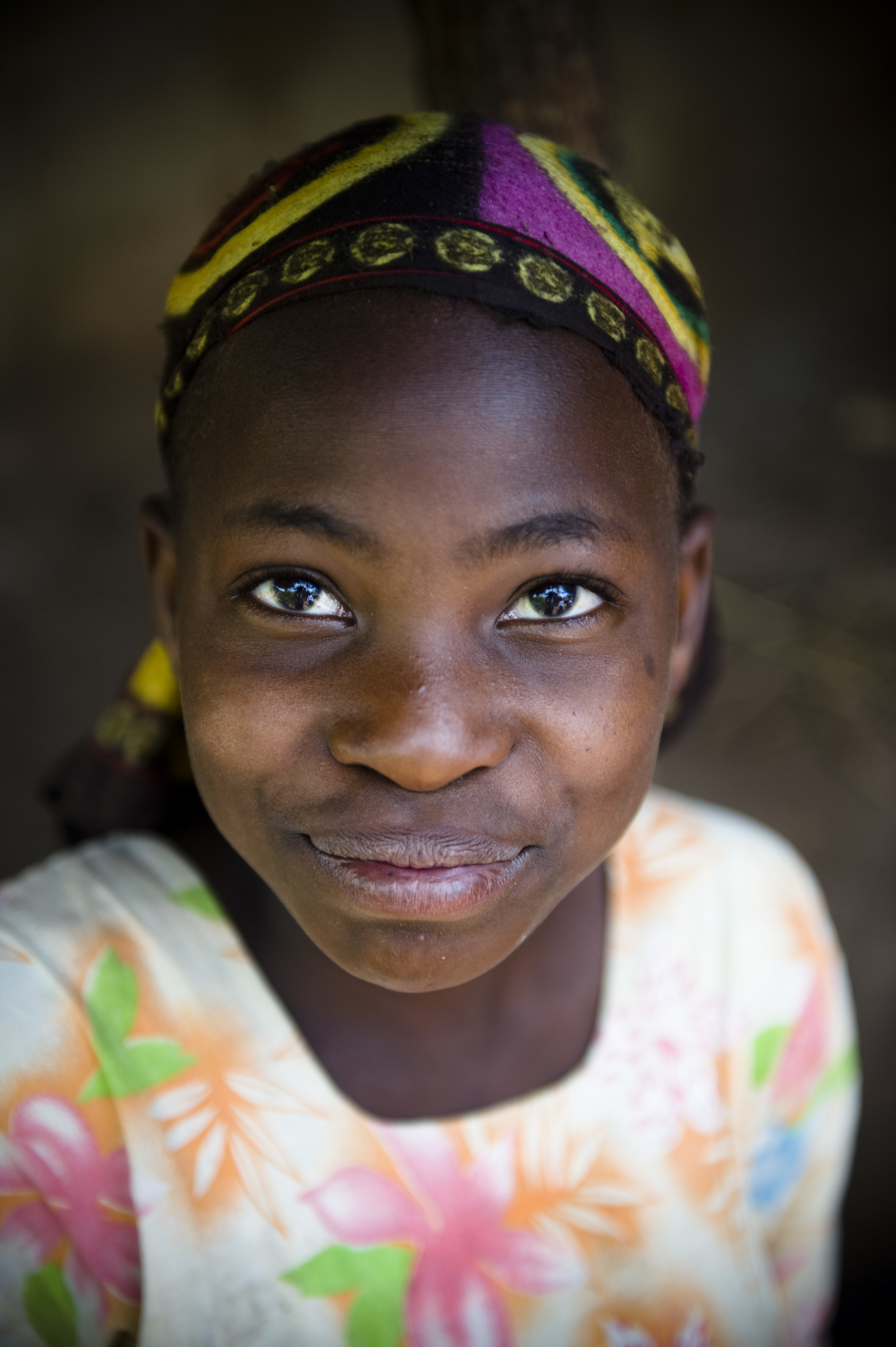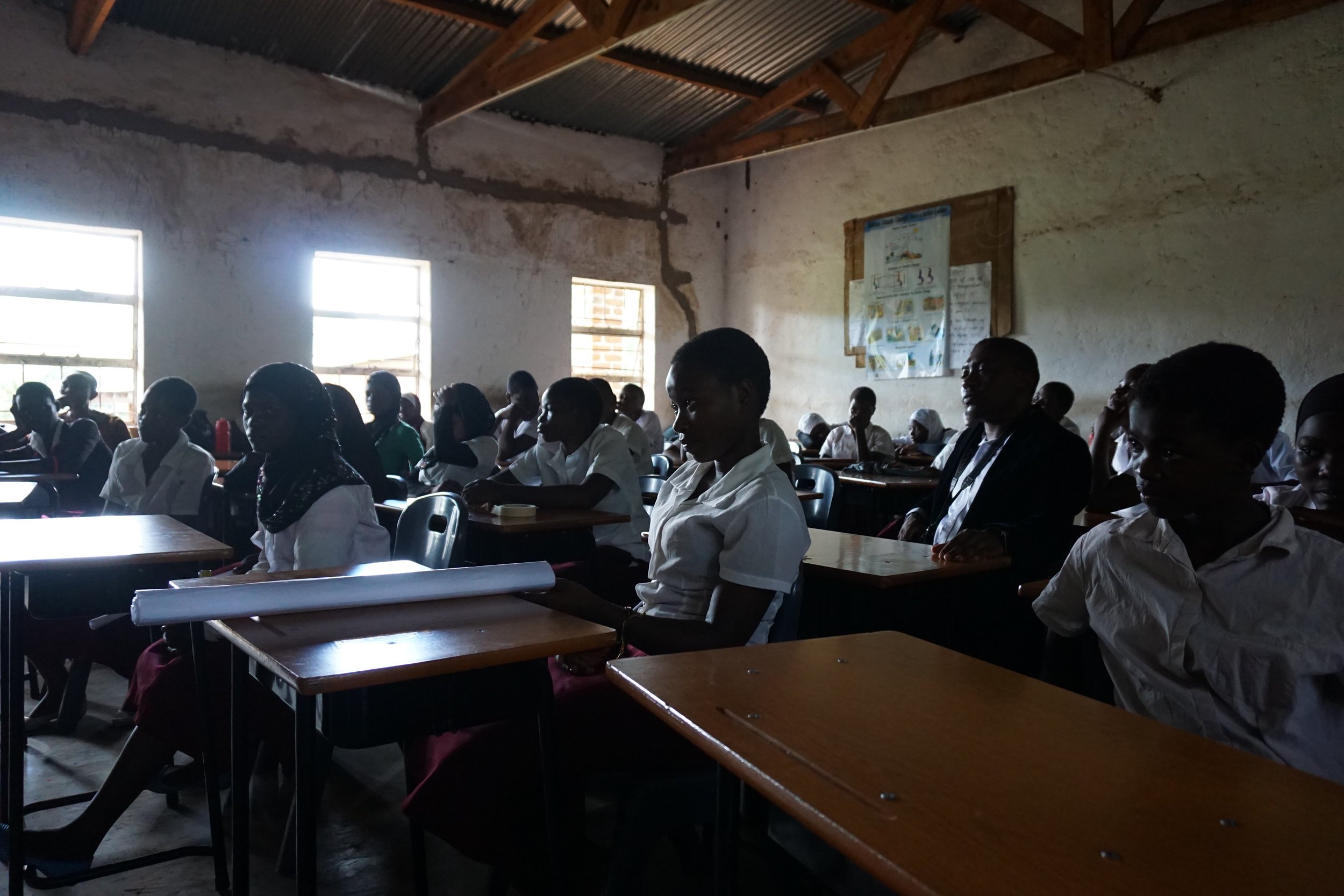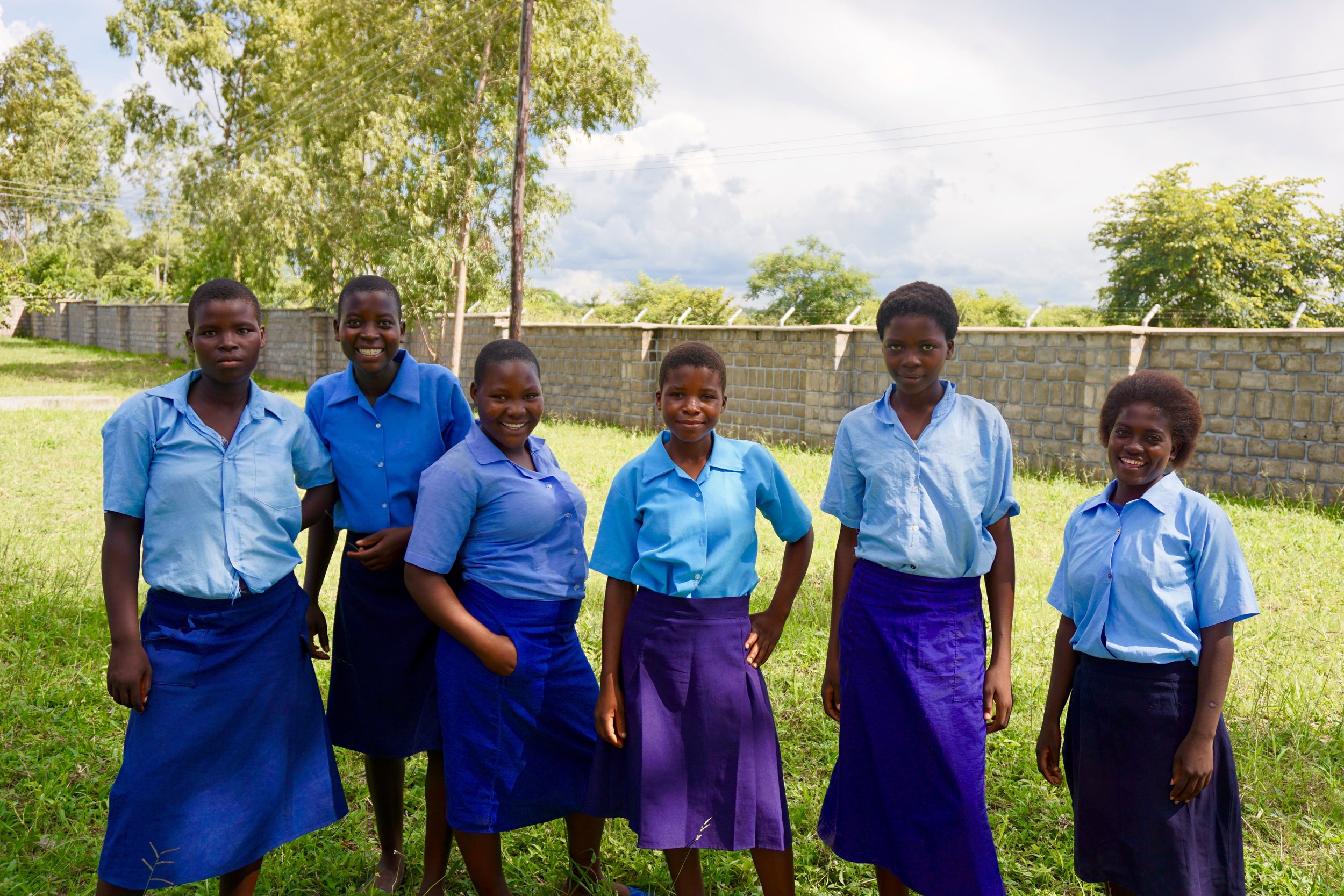Empowering Malawian community-based organizations to create secondary school education pathways for vulnerable girls
 Charity Mankhokwe is a 19-year-old girl pursuing her dream of a career in the tourism sector. This milestone seemed incredibly distant a few years ago, when her parents could barely afford her secondary education. However, a loan from a Firelight community-based grantee - Foundation for Community Livelihood and Development (FOCOLD) - empowered her parents to start their own small enterprise and brighten their family’s future. Their hard work in their self-started grocery shop is what paves the way for Charity to continue brightening her own future. Charity says, “With proceeds from this business, my parents are able to raise money for my college fees and other basic school needs.”
It is life-changing stories like Charity’s that keep our passion burning brightly at Firelight. We are inspired by the tireless efforts of parents like Charity’s, and by the drive Charity herself shows as she empowers herself through her studies and builds her own future. Just an importantly, we are also inspired by the community-based organizations that we fund and mentor – those that are working with families like Charity’s every day.
Charity Mankhokwe is a 19-year-old girl pursuing her dream of a career in the tourism sector. This milestone seemed incredibly distant a few years ago, when her parents could barely afford her secondary education. However, a loan from a Firelight community-based grantee - Foundation for Community Livelihood and Development (FOCOLD) - empowered her parents to start their own small enterprise and brighten their family’s future. Their hard work in their self-started grocery shop is what paves the way for Charity to continue brightening her own future. Charity says, “With proceeds from this business, my parents are able to raise money for my college fees and other basic school needs.”
It is life-changing stories like Charity’s that keep our passion burning brightly at Firelight. We are inspired by the tireless efforts of parents like Charity’s, and by the drive Charity herself shows as she empowers herself through her studies and builds her own future. Just an importantly, we are also inspired by the community-based organizations that we fund and mentor – those that are working with families like Charity’s every day.
Why girls’ secondary education in Malawi?
Providing an opportunity for vulnerable adolescent girls to access education and break free from a cycle of poverty and harmful cultural practices through community-led organizations, ideas, and action is what drives our secondary education initiative in Malawi.
Poverty in Malawi has been deepening for decades. Of the 15.9 million Malawians, about 12 million are living below the international poverty line of $1.25.[1] At present, 46% of women in Malawi are married by age 18, 14.8% of female youth face unemployment, and 137 out of every 1,000 adolescent girls give birth annually. Education, however, can be a pathway out of poverty.
But girls in Malawi don’t often get the chance to pursue their education beyond the primary level. Girls in Malawi are vulnerable to cultural practices such as child marriages, preference on the part of parents to send boys to school, and early pregnancies because of limited access to sexual and reproductive health information and resources. Because of these barriers, young women often don’t make it to secondary school and when they do, their performance in school is lower on average, compared to boys, as is their capacity to stay in school until graduation.
What are Community Day Secondary Schools?
With fewer than 100 secondary schools in the 1990s, the Malawian government responded to significant demand for secondary education in 1998 by converting hundreds of skeletal Distance Learning Centers into a new type of secondary school – the "Community Day Secondary School" (CDSS). Today, Community Day Secondary Schools are a testament to the will of the government and the desire of the people to expand access to secondary education, but they still face significant challenges, from poorly trained teachers, to limited teaching and learning materials, to an outdated curriculum that is ill-suited to meet the needs of the economy or of the next generation of graduates. This has led to almost universally poor perceptions of the schools and by extension, poor perceptions of the value of secondary education. Parents, students, and communities are unsure of the value of schooling at the CDSSs, and thus early marriage for girls and early work for boys is often prioritized over secondary school enrollment.
 Currently, 789 of the 937 secondary schools in Malawi are Community Day Secondary Schools (CDSSs), catering to about 67% of secondary education students. However, the CDSSs are at the bottom of a three-tier structure of public secondary schools - categorized (and ranked) as National, District Day Secondary Schools, and CDSSs. Although they serve the majority of students, the CDSSs are located primarily in rural, remote areas. They are generally underfunded, often have underqualified teachers, less than conducive learning environments, inadequate learning facilities, and insufficient teaching and learning materials.
Currently, 789 of the 937 secondary schools in Malawi are Community Day Secondary Schools (CDSSs), catering to about 67% of secondary education students. However, the CDSSs are at the bottom of a three-tier structure of public secondary schools - categorized (and ranked) as National, District Day Secondary Schools, and CDSSs. Although they serve the majority of students, the CDSSs are located primarily in rural, remote areas. They are generally underfunded, often have underqualified teachers, less than conducive learning environments, inadequate learning facilities, and insufficient teaching and learning materials.
What is Firelight doing to address this challenge?
Since 2015, Firelight has partnered with Dubai Cares, The MasterCard Foundation and the Flora Family Foundation in supporting four local Malawian organizations to develop and demonstrate innovative community-based solutions with the aim of improving Malawian secondary school access and completion rates amongst vulnerable girls. It is through our partnership with deeply rooted community organizations like these that we are able to celebrate stories of success, of hope, and of a brighter future for young women - stories like Charity’s.
In this initiative, Firelight is funding and mentoring four local organizations - Foundation for Community Livelihood and Development (FOCOLD), Namwera AIDS Coordinating Committee (NACC), Girls Empowerment Network (GENET) and Advancing Girls’ Education in Africa (AGE Africa). Thus far, our partnership has focused on working with 15 CDSSs in the southern region of Malawi. Our target beneficiaries are adolescent girls in secondary schools in rural Malawi.
As our grantees work to empower young women, Firelight, in turn, strives to bolster our grantees’ capacity, impact and confidence. Each partner has received targeted, multi-faceted mentoring and capacity building throughout the initiative.
Beginning with the adolescent girl student in mind
Based on the knowledge that little had been done in the past to address the challenges of the CDSS system, Firelight believed that innovative ideas were needed.
To facilitate that thinking, Firelight and our local grantees were trained in human-centered design - a user-led approach that focuses on empathizing with students, families and communities in order to deeply understand the context and roots of their education challenges. Each of Firelight’s grantees spent many months listening deeply to the realities and needs of adolescent girl students and their communities and developed their innovations in direct response to those realities.
 Insights generated using this approach were used to design interventions targeted directly at the needs of the end user: adolescent girls. Consistent with the stages of design thinking, our grantees developed the feedback into prototypes which were then piloted, and continually refined in response to the ever-mutating barriers reflected back to them from the adolescent girls they serve.
Insights generated using this approach were used to design interventions targeted directly at the needs of the end user: adolescent girls. Consistent with the stages of design thinking, our grantees developed the feedback into prototypes which were then piloted, and continually refined in response to the ever-mutating barriers reflected back to them from the adolescent girls they serve.
This kind of deep, participatory engagement as a precursor to program design also afforded the communities themselves the space to participate in solution formulation without transplanting models that may not be suitable in view of their operating realities.
This does not mean that the approach disallows learning from what has been proven to work elsewhere. Instead, it captures the specific factors that characterize every community, every family, and every adolescent girl.
Courtesy of this human-centered design, our partners have come up with innovative, community-driven, context-specific solutions to the challenges that undermine girls’ education in their respective communities. Our four grantees are now implementing, documenting and testing four different models, each customized to reflect the needs of their respective communities. These models are all different, offering prototypes for learning and potential scale in the future. They include key components such as –
- the engagement of men and boys
- increasing community incomes
- life and livelihood skills training for students and parents
- community social funds dedicated to providing for adolescent girls’ education
- increasing communities’ advocacy efforts, and
- mobilizing resources at the community level.
All of the models seek to increase the involvement of parents in children’s learning and school management, in peer learning among parents, and in the fight against retrogressive cultural practices.
Engaging important stakeholders from the beginning
At Firelight, we understand the value of partnerships with key stakeholders in everything we do. Community structures and leaders have been a strong pillar in this initiative. In exploring, testing and developing their ideas, our grantees have reached out to community members, creating awareness and tracking students. Our grantees have also collaborated closely with Area Development Committees, mother support groups, Parent Teacher Associations, and school management committees to work to address factors that limit girls’ access to quality education in CDSSs.

Firelight and our grantees have also cultivated strong working relationships with Malawi’s Ministry of Education officials at national, divisional, and district levels. Because of these relationships, the government has been openly supportive of our initiative. The Ministry has given our local partners unprecedented access to schools and provided them with the support they need to develop and implement innovative, community-driven solutions.
With these strong partners, we are now also poised to contribute to the review of the National Educational Sector plan, with a mission to achieve quality learning outcomes in CDSSs at scale.
Are we making a difference?
The most recent data on our initiative shows improvements in the lives of girls like Charity, who inspired this reflective piece. Improved economic status among targeted households has improved school retention. Previously, parents could not afford basic meals for their families. Now, profits from their income-generating activities allow them to fulfill their families’ basic needs- including the education of their girls.
With increased awareness, communities are also mobilizing resources and establishing local funds to contribute to the school fees of girls from the poorest families. An active follow-up mechanism facilitates the tracing of vulnerable girls’ progress and the tracking of their performance.
Working with traditional institutions, partnering with the schools’ administration, and encouraging peer learning among parents, our partners are also addressing cultural practices and economic circumstances that negatively affect the educational performance of girls. As a result, we have started registering gradual attitude shifts in the community. Parents follow up on their children’s performance, give them fewer chores at home to enable them study, and ensure that students have a meal before going to school.
What does the future hold?
Prospects are brighter for secondary school girls in our target CDSSs in Malawi. We are excited about the ideas that our grantees have developed and about what the future holds for their community-driven solutions for girls’ secondary education in Malawi. We look forward to working with them to test, document and adapt their ideas that may one day be organically adopted or systematically scaled by the Malawian Government. We are also grateful for the human-centered design process for giving us all such rich insights into the complex lives of Malawian girls. We hope these insights will help our grantees and our field.
In collaboration with our extraordinary partners, Firelight is dedicated to continuing to work for vulnerable girls in rural Malawi -- as households, families, schools, and communities change, so do the lives of girls like Charity.
[1] https://www.ruralpovertyportal.org/country/home/tags/malawi

